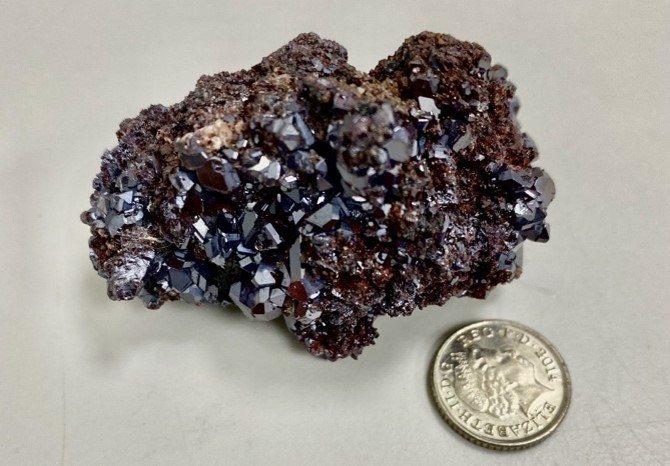 Cuprous oxide – the mined crystal from Namibia used for making Rydberg polaritons. Credit: University of St Andrews
Cuprous oxide – the mined crystal from Namibia used for making Rydberg polaritons. Credit: University of St Andrews According to a new study led by the University of St Andrews, a specific kind of light created from an ancient Namibian stone could be the key to new light-based quantum computers that could solve long-standing scientific problems.
The study used a naturally mined cuprous oxide (Cu2O) gemstone from Namibia to create Rydberg polaritons, the largest hybrid particles of light and matter ever created, and was published in Nature Materials in collaboration with scientists from Harvard University in the United States, Macquarie University in Australia, and Aarhus University in Denmark.
Rydberg polaritons are constantly switching from light to matter and back. Light and matter are like ‘two sides of a coin’ in Rydberg polaritons, and the matter side is what causes polaritons to interact with one another.
This interaction is critical because it enables the development of quantum simulators, a sort of quantum computer that stores information in quantum bits. Unlike binary bits in traditional computers, which can either be 0 or 1, quantum bits can be any value between 0 and 1. As a result, they can store a lot more data and run more tasks at the same time.
This capability could allow quantum simulators to solve fundamental puzzles in physics, chemistry, and biology, such as how to build high-temperature superconductors for high-speed trains, how to make cheaper fertilizers, and how proteins fold, making it easier to produce more effective pharmaceuticals.
Dr. Hamid Ohadi from the School of Physics and Astronomy at the University of St Andrews, and project lead on this groundbreaking research said: “Making a quantum simulator with light is the holy grail of science. We have taken a huge leap towards this by creating Rydberg polaritons, the key ingredient of it.”
The researchers trapped light between two extremely reflecting mirrors to make Rydberg polaritons. A cuprous oxide crystal was thinned and polished to a 30-micrometer thick slab (thinner than a human hair) and sandwiched between the two mirrors to produce Rydberg polaritons 100 times larger than previously demonstrated.
“Purchasing the stone on eBay was easy,” said one of the lead authors, Dr. Sai Kiran Rajendran of the University of St Andrews’ School of Physics and Astronomy.
“The challenge was to make Rydberg polaritons that exist in an extremely narrow color range.”
The team is currently developing these technologies in order to investigate the feasibility of creating quantum circuits, which will be used in quantum simulators in the future.
The paper Rydberg exciton-polaritons in a Cu2O microcavity is published in Nature Materials and the research paper’s DOI can be found here.[10.1038/s41563-022-01230-4